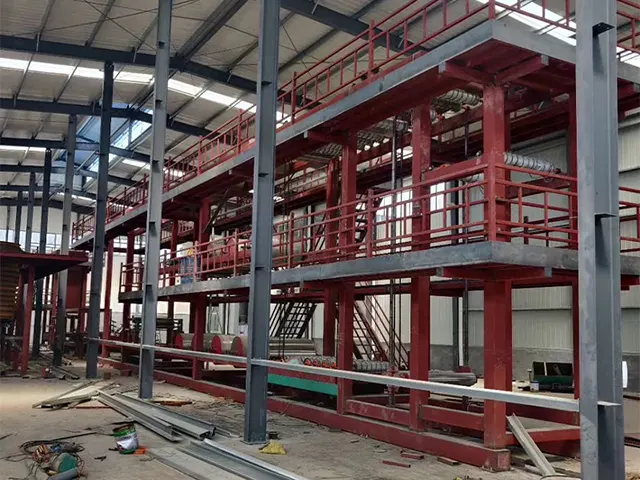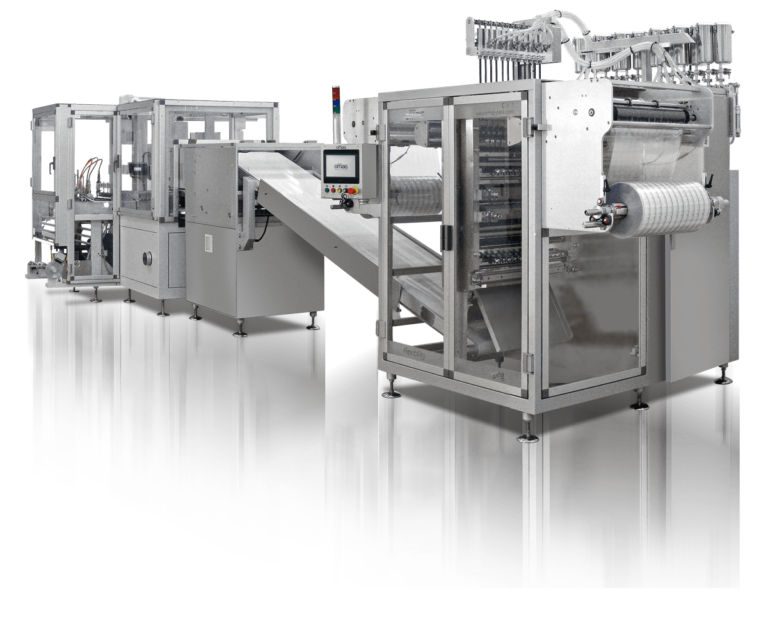Production of moisture insulation
Foulad Machine Delijan
The waterproofing we know in Iran as Izogam is a very resistant layer whose main base is bitumen and together with other synthetic fibers forms insulation to prevent water and moisture from entering.
As mentioned, waterproofing is made based on the use of bitumen, petroleum materials and some mineral materials, which can be used for foundations of structures, insulating surfaces to prevent moisture and water penetration, such as the walls of swimming pools and roofs and… and also mentioned the insulation of seams, gaps and other places intended for insulation, that one of the advantages of this type of waterproofing, despite the variety of layers and materials used in its production, is the ease and speed of its installation. be
The materials used in waterproofing layers can be industrial bitumen 60-70 or natural bitumen, APP polymer materials, tissue, woven and plain polyester, mineral materials (talc powder, carbonate, etc.), aluminum and nylon foils from polyethylene. will be
In waterproofing, bitumen (a mixture of bitumen and improving additives) is used as an impregnating agent for each layer, and mineral powders such as talc are used in high levels so as not to stick inside the packed roll. Plastic film is also used on the surface with the product’s logo and promotional items. It is worth mentioning that in a number of products, the top surface is covered with aluminum foil.
Method of production:
The tissue and polyester materials are entered into the bitumen tank which has been prepared in the baking ovens before this stage, in the desired type and quality, and then it is mixed with the primer materials or blown bitumen, and in the last stage of this part, with the standard setting desired, the thickness of the isogam is adjusted.
In the new stage, the aluminum foil sheets are attached to the layer combined with the material, and in order to reduce the temperature, it enters the cold water pool so that the plastic layer can be added to it. After cooling in the pond, Isogam is glued together in several layers and passes through the cold rollings, and in the continuation of the process, polyethylene film is added to the lower part of the layers.
After this step, they enter the storage elevator to be completely dried by Izogam drying fans and finally it is directed to the roll machine to be packed around a cone-shaped rod as a product roll and at the end of the operation, the product is produced in ten meter long rolls. It will be cut and rolled and thrown out by the Pran system.
Izogam production line machines and equipment
The machines and production equipment required for the production of moisture insulation are:
Bitumen pond or 80 to 150 ton bitumen storage tanks equipped with hot oil coils and insulated with glass wool made of galvanized sheet
Complete hot oil boiler system (including oil storage tank, expansion tank, etc. equipped with electrical panel and controlling systems)
KVGF9 type insulated pump to transfer bitumen from tank to gasoline
Elevator with a capacity of 1000 kg (6-meter lift) equipped with a helical electric gearbox with a brake to lift materials into the warehouse.
Cooking oven (Benza) equipped with electric motor with gearbox and electrical panels and electronic controlling systems and gas burner installed on fireproof brick oven and special requirements for chimney
Dual-purpose and double-walled hot oil mixer with rock wool insulation and cover equipped with electric motor with gearbox and electrical panels and electronic controlling systems and gas burner installed on fireproof brick furnace and special requirements for chimney
Double-walled smoothing juice pan and submerged roller with hot oil bitumen pump KVGF9 for the implementation of coating work and related electrical panel
Coating system of aluminum and nylon foil and polyethylene sheet equipped with gearbox electric motor and electrical panels and electronic controlling systems
The cooling system includes a two-story pan and draw rollers equipped with a cooling liquid circulation pump from the relevant pool and a cooling system including a cooling tower.
The reservation system has a moving elevator for storing isogam layers
Semi-automatic packaging machine including pulling rollers and cutting and rolling system and production rolls equipped with automatic control panel

Polyester glass fiber (tissue) ironing machine
consisting of several rollers that are opposite to each other (top and bottom) and glass fibers (tissue) and polyester pass over them to reach the pan containing polymer bitumen (sap), so that the polyester on the tissue Spread evenly. For changing tissue or polyester, this machine can be made in two normal (manual) types with an elevator (that is, before the tissue and polyester rolls are finished, new rolls are placed on the line).
Juice pan machine (polymer bitumen or bitumen modified with APP)
It consists of a U-shaped pan with a width of 150 and a length of 150-300 cm, which consists of an inner roller, rollers that determine the thickness of the waterproofing and a wiper under the tissue (glass fibers). This pan can be single-walled and in the form of a furnace and a burner. With two walls, along with the circulation of hot oil in the second wall to keep the pan warm and prevent the juice from sticking in it.
Insulation cooling device
It consists of two to three floors of the water pan, in which the circulating water drives the thick insulation rollers under the water, and the top floor is the insulation dryer part (considering the geographical location, in the cold regions of The number of layers is reduced and in tropical regions it is added to the number of layers of the pan to speed up drying).
Insulation stretching device
The moisture insulation being produced is drawn by this part. This part is where polyester film, powder (carbonate) is attached to the back of the insulation (if there is no aluminum foil) or the insulation is dented, etc.
Insulation reservation device in production
Before the insulation being produced reaches the packaging area, the insulation must be placed in the reservation area to an amount that does not cause the insulation to tear during the packaging. The reservation device can be either elevator (vertical) or tension (horizontal).

